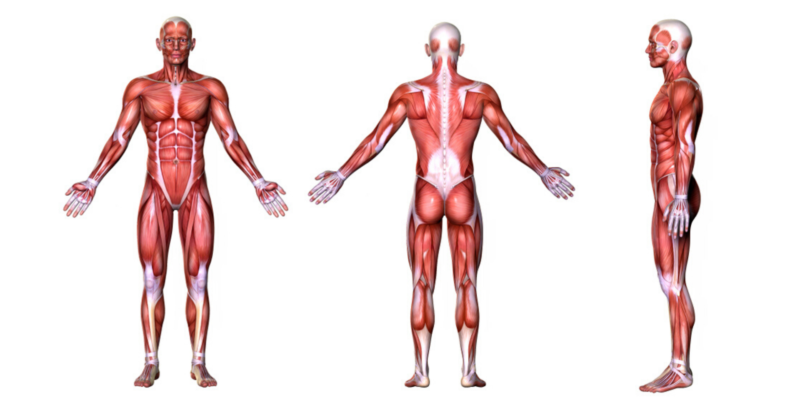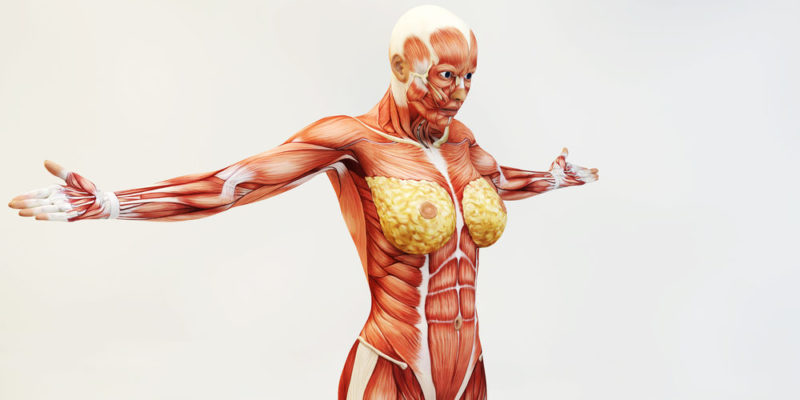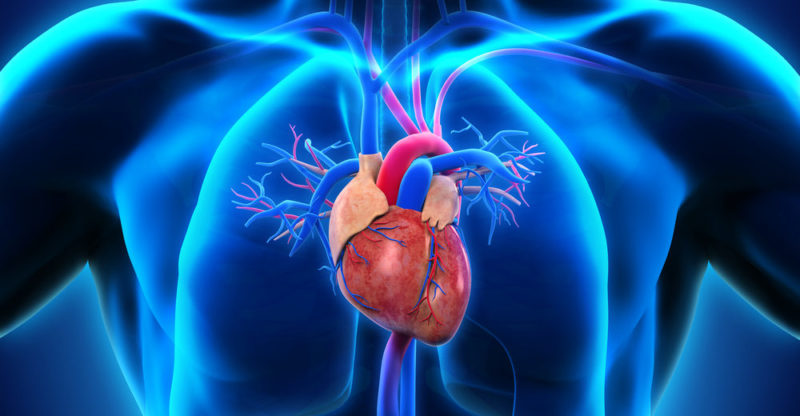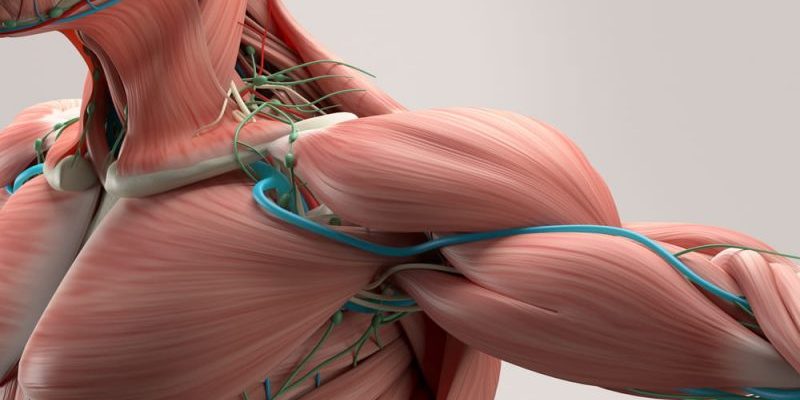We explain what the muscular system is, its component parts and their functions. In addition, its characteristics and muscle care.
What is the muscular system?
Muscular system is understood as the set of muscle fibers and tissues that constitute the necessary network to mobilize and hold firm the skeleton of vertebrate animals , including man, and that give a defined shape to their body .
This system is finely conceived to allow endless postures and certain movements and constitutes in the human case 40% of the total body mass (more than 600 different muscles ).
Most of the muscles are controlled at will by the individual’s central nervous system , although many others respond to reflexes, such as the heart muscles that do not stop beating as long as the organism lives.
This means that they are a vital part of the body’s makeup , providing support, agility, and protection, as well as taking part in the energy metabolic circuitry .
Cell classification
The cells that make up the different muscles of the body are called myocytes , a type of multinucleated cell , long and thin, provided with a great elastic capacity.
Through contractions and elongations, these cells integrate fibers of the size that are needed and mobilize the different parts of the body.
Elements of the muscular system

The muscular system of humans and most higher mammals is made up of muscles and tendons . The former have the task of contracting and promoting movement, some at will and others reflexively.
The latter, on the other hand, are strong bands of collagen that join the muscles to the bones and support the tension generated between the parts and bring them together to avoid tears.
Muscle Types

There are three types of muscle in our body:
- smooth muscles Also called “visceral” or “involuntary”, since they are not consciously controlled by the central nervous system, but rather respond to the vegetative nervous system . They make up the excretory system , reproductive system , etc.
- Striated muscles. Also called “skeletal” muscles, they present under a microscope a series of striae and hence their name. They are attached to the bones and respond to the voluntary control of the individual, as is the case with the muscles of the eyeball, mouth or limbs.
- cardiac muscles. They are the muscles that make up the heart and whose contraction and distension is involuntary and continuous. This exercise is performed about 100,000 times a day, which is why they are some of the strongest muscle fibers in the body.
Muscle functions

The different functions of the muscular system are:
- Locomotion. It allows the individual to move, move him on some surface, allow him to walk, run, climb, etc.
- Position. It keeps the shape of the body stable, even at rest, and keeps each part of the body in its proper place.
- Movement of the internal organs. It manages the internal organs such as the intestine or the heart, allowing them to carry out their function.
- Stability. Muscles keep the body balanced and in place.
- Information. The contraction of the muscles can reveal ailments of some kind in the body, it also allows us to adopt expressions that transmit information to those around us.
- Protection. The muscles, together with the skeleton, defend the internal organs from possible attacks and keep them safe inside us.
- Heat. When operating, our muscles generate heat energy.
Muscle shape
Muscles have different shapes, adapted to the functions they must carry out. Among them we find:
- Fusiform. Spindle-shaped muscles, large in the center and thin at the ends.
- Flat and wide. Like the abdominals and the ribcage that allow breathing .
- Fanoids. Fan-shaped, like the pectorals.
- Circulars. Ring-shaped, they are responsible for opening and closing ducts, such as the opening of the anus.
- Orbicularis. Similar to the fusiform ones, but with a hole in the center, which allows parts such as the eyes or mouth to open and close.
Muscle function

Muscles, as we have seen, have different ways of operating. We can identify three types of movement:
- Volunteers. Those that we carry out with full awareness, such as moving our limbs.
- Involuntary. Those alien to our desire but that somehow make themselves noticed, like the visceral ones.
- freelancers Those that do not depend on our will and operate according to a totally independent program, such as cardiac ones.
Muscle energy
Like so many other parts of the body, muscles get the energy they need to operate from the glucose we consume when eating.
This process can occur in the presence of oxygen (oxidation of sugars ) or in its absence (by lactic acid fermentation). The first mode is the one corresponding to aerobic exercises, the second to anaerobic ones.
Muscle care

The care of the muscles implies, in general terms, the sufficient intake of glucose, vitamins and magnesium , as well as the frequent exercise that maintains the muscular fibers in their correct tone and their fair strength.
A physically active life allows you to maintain muscular proportions and strengthen your work capacity, while inactivity and being overweight weaken them and allow them to fail or hurt in the face of sudden effort.
Muscular accidents

There is a possibility that the muscles are overwhelmed by the work they do or prevented for it by some disease. Thus, it is usually spoken of:
- Tears. They occur when the fiber of muscle tissue breaks.
- Cramps. Spasmodic and involuntary contractions of superficial muscles, often painful.
- sprains Moderate to severe damage to muscle fibers, forced to operate beyond their limits.
- Dystrophy. Reduction of muscle tissue below its needs.
- Atrophy. Impossibility of muscle tissue to operate.
- Myasthenia. Disease that weakens muscle tissue through the presence of an acidic compound among its substances.
Muscular fatigue
Muscle fatigue is known as the reduction in muscle work capacity due to lack of energy . It is usually accompanied by pain in the area and low or no response of the muscle to the desired stimulus. The necessary energy is replenished through rest and feeding.
The above content published at Collaborative Research Group is for informational and educational purposes only and has been developed by referring to reliable sources and recommendations from technology experts. We do not have any contact with official entities nor do we intend to replace the information that they emit.














